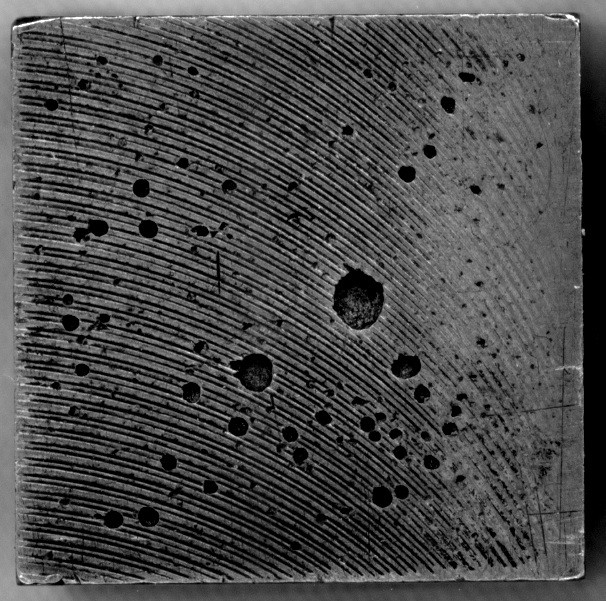Catàleg Tipogràfic
Los catálogos tipográficos son publicaciones hechas por las fundiciones e impresores para demostrar el rango de calidad de tu trabajo. Han sido una parte esencial desde la invención de la imprenta en el siglo XV y sirven para mostrar como quedará un texto tras ser impreso. El catálogo tipográfico ideal ordena las tipografías por tamaño y utiliza frases pequeñas (en vez de una línea de la A a la Z) para las muestras.
Àrea:
Àmbit:
Subàmbit:
Conceptes relacionats:
Observacions:
muestrario
Referència:
Myfonts.com [online] Disponible en: https://www.myfonts.com/info/specimen-book/
Vincle:
Text:
Specimen books are published by type foundries and printers to demonstrate the range and quality of their work.
Specimen books (in full: type specimen books) are the printed brochures or catalogs of type foundries and printers, offered to advertise the range and quality of type available. They have been an essential part of the printing trade since soon after the invention of printing with movable metal type in the 15th century.
While they act as any brochure or catalog — to encourage sales by means of attractive presentation — specimen books continually remind the customer that material similar to the brochure itself may be typeset, if only particular fonts are bought.
The ideal specimen book shows the typefaces in a range of sizes, using short sentences rather than A-Z strings (which are of little use for getting a feel for the type in use). Color is sometimes used, but usually very discreetly, such as a red title. Samples in text sizes (6 to 14 point) typically show a longish block of text to help one judge readability, but would not be shown for decorative and display typefaces. It is quite common not to show a complete character set: foundries have always been concerned about piracy. Instead, a chart might be shown in an appendix where the characters included in all the foundry’s fonts are shown.
For a foundry’s more important typefaces, individual specimen books are sometimes produced that concentrate on just a single typeface family. For newspaper types, it is important to see how the typeface survives on low quality paper. For other designs, it a foundry may decide that a focus on just one family will give a specimen a pleasing coherence. In the early years of the digital era, even Adobe supplied a free specimen book with each font purchase.
The wholesale move to standardized digital font formats around 1990 led to the complete separation of the expertises of making printing equipment and manufacturing fonts. Essentially, all fonts should work on all printers. This meant that printing equipment marketing had only to demonstrate quality with standard typefaces such as Times New Roman, and compliance with standard font formats.
Since the late 1990s the web has removed much of the need for a foundry to issue traditional specimen books, and the cost of them puts off the company accountants (or, looking at it another way, producing specimen books makes the fonts more expensive). Instead, just as websites have taken the place of brochures in so many businesses, a well-designed foundry website typically shows its fonts used in various imaginative ways.
Of course, several foundries still issue specimen books: some of the most admired in recent years are from Font Bureau, Hoefler, and Storm. Distributors too have offered notable specimen books — the FontBook (1st edn. 1993, 2nd edn. 1998) from FontShop and books from ITF in 1995 and 1998.
In 2002, P-Type Publications hit upon a new way to produce specimen books, at only a moderate expense for foundries. Independent foundries (i.e. none of the older companies with existing substantial marketing efforts) were invited to participate in the Indie Fonts project. The foundries would design pages showing their fonts, based on templates supplied by the P-Type editors. The result is a very pleasing set of two books of 400 pages each. The books are not intended to be given away as free catalogs, of course. Instead, they are priced at just under $40 each, a price eased by each coming with a CD containing a selection of fully-functional fonts from the featured foundries.
Old type specimen books can be extremely collectible. Their value today can be attributed to their beauty — typefounders went to considerable lengths to show their typefaces in the best possible light — and to their rarity — as ephemera, they were likely to be discarded or damaged. To the discerning modern-day typographer, these beautiful objects serve as an inspirational reminder of the craft and creativity that has always been part of making type.
